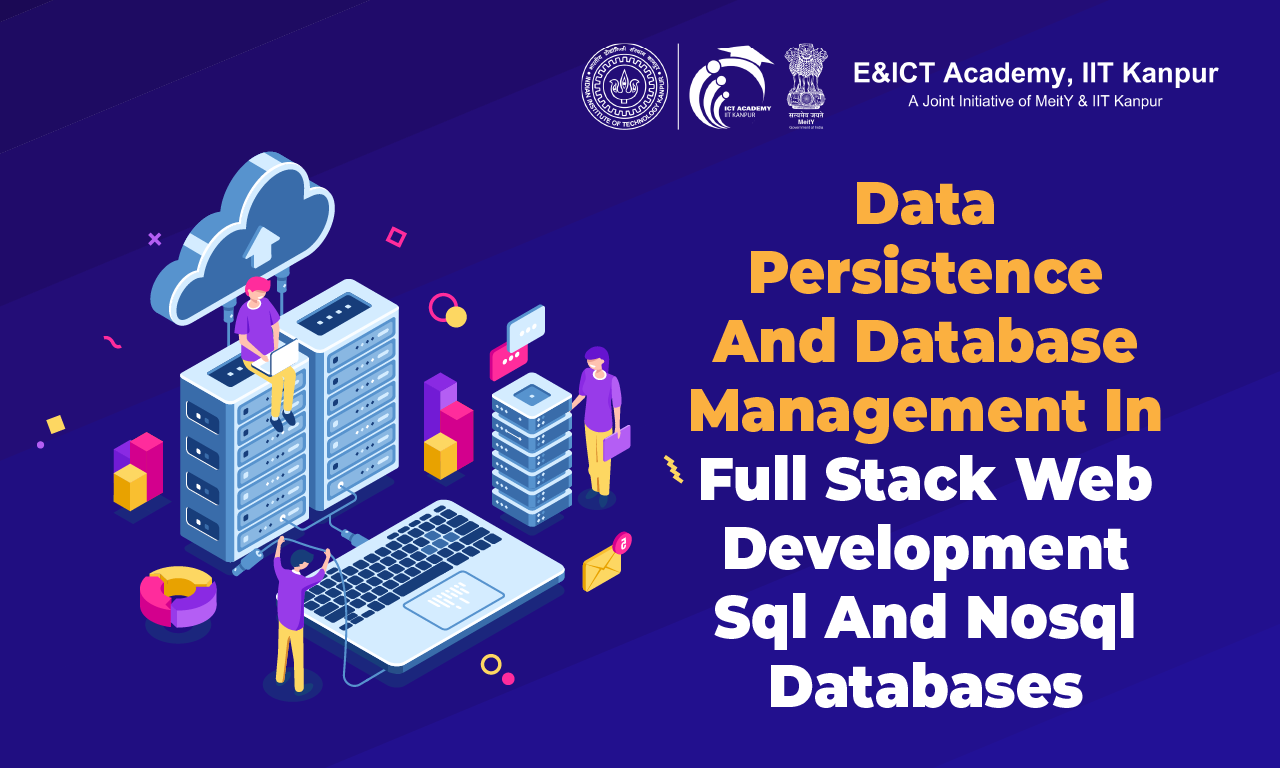Data Persistence And Database Management In Full-Stack Web Development: SQL And NoSQL Databases

The software development market is estimated to surpass USD 234.7 billion by 2028 and both web development and full-stack development industries are growing rapidly. In full-stack web development, data persistence and database management are vital aspects. They are responsible for the storage and recovery of data from a database and supervise the database as well. SQL and NoSQL are the primary types of databases. Scroll down to know more about SQL databases, NoSQL databases, and their primary differences.
Introduction To SQL Databases
SQL databases are relational databases and the data is stored in tables. For every table, there are various columns, and each row defines one record. SQL is a language for querying and manipulating data in relational databases.
For applications that are required to store structured data, SQL databases are a decent choice. Structured data is categorized in a particular way. In addition, SQL databases are also a reasonable option for applications that must execute complicated queries on data.
SQL databases are normally utilized for applications that need complicated queries, a well-defined schema, enhanced data integrity, and foreseen performance. Such applications are customer relationship management, financial and supply chain management, enterprise resource planning, online transaction processing, data warehousing applications, etc.
Introduction To NoSQL Databases
NoSQL databases are non-relational databases where the data is stored in numerous ways. This is because a few NoSQL databases store data graphs or key-value pairs, while some store data in documents. In order to store huge data or data that can not be arranged in a relational model, NoSQL databases are primarily used.
NoSQL databases are a decent option to be used for highly scalable applications. They are generally utilized for applications that necessitate a schemaless data model, high performance, flexibility, and a huge volume of writes. Such applications are e-commerce, gaming, social media, big data, Internet of Things applications, etc.
What Are The Major Differences Between SQL And NoSQL Databases
There are numerous differences between NoSQL and SQL databases, but the major ones are mentioned here:
Database Architecture
If the database architecture is taken into account, NoSQL databases are non-relational databases and SQL databases are relational databases.
Relational databases are known for data storage in tables, which consist of various rows and columns. There will be one record in every row and the data about that record will be present in that column.
It is important to note that tables are not used for storing data in non-relational databases. These databases make use of various data models to store data, including documents, key-value pairs, wide-column stores, graph databases, etc.
Languages
Structured Query Language (SQL) is the primary language used by SQL databases for interacting with the database. Structured Query Language is a declarative language so it is only possible to inform what you want to do and not how to do it directly.
Coming to the NoSQL databases, there is no standard language that is used by all databases. For instance, there are a few NoSQL databases that use Structured Query Language. However, the majority of the NoSQL databases have their own proprietary languages.
Structure
When it comes to the structure of the database, SQL databases come with a fixed schema. Due to that, during the time the database is made, the data model is clearly defined, making it simple to execute data integrity and consistency.
NoSQL databases maintain a flexible schema, so it is possible to alter the data model. Due to that, NoSQL databases are competitively more flexible than SQL databases. However, the drawback of this flexible structure is that it will be hard to execute data integrity and consistency.
Database Systems
NoSQL databases are ideally the most preferred option for various analytical applications. Such analytical applications include ML, big data analytics, etc. For transactional applications involving banking and e-commerce systems, SQL databases are usually the best choice.
Scalability and Performance
NoSQL databases feature horizontal scalability, while SQL databases feature vertical scalability. In order to boost the SQL database performance, one can add numerous resources to the server. For enhancing the NoSQL database performance, it is essential to add more servers.
When it comes to read-based operations, NoSQL databases are much quicker compared to SQL databases. Nevertheless, SQL databases are much quicker compared to NoSQL databases in terms of write-based operations.
Use Cases
For CRM applications, SQL databases are used for housing customer-related data, encompassing details like contact particulars, purchasing history, and marketing preferences. Similarly, ERP applications utilize SQL databases for storing financial information, ranging from inventory levels and sales orders to accounts payable records.
NoSQL databases are utilized in social media applications for storing data of users, including profiles, posts, likes, etc. E-commerce applications and gaming applications also utilize NoSQL databases for storing different product data and game data. In addition, NoSQL databases are the ultimate choice to store data in real-time applications.
The below table gives a summary of the primary differences between SQL and NoSQL databases:
| SQL Database | NoSQL Database | |
| Database Architecture | Relational | Non-relational |
| Languages | SQL | Differs |
| Structure | Fixed schema | Flexible schema |
| Database systems | Transactional | Analytical |
| Performance | Write-optimized | Read-optimized |
| Scalability | Vertical | Horizontal |
Which One To Use: SQL vs. NoSQL Databases
Whether to choose SQL databases or NoSQL databases is ultimately based on the distinct needs of the specific application. SQL database is a decent choice for applications where the structured data should be stored in a relational manner. If the application has huge data volumes or data that can not be placed in a relational structure, NoSQL databases are the preferred choice.
Bottom Line
To conclude, SQL databases and NoSQL databases are used for different applications. In order to store structured data and execute complicated queries, SQL databases are the best choice. Meanwhile, NoSQL databases are recommended in order to store large data or data that can not be arranged in a relational model.
The requirements of the applications should be taken into account to determine which is best between SQL databases and NoSQL databases. In addition, make sure to pay attention to the data size, type of data, budget, and other performance needs to choose the best option between SQL databases and NoSQL databases.



